The Rise of the 10x Content Engineer
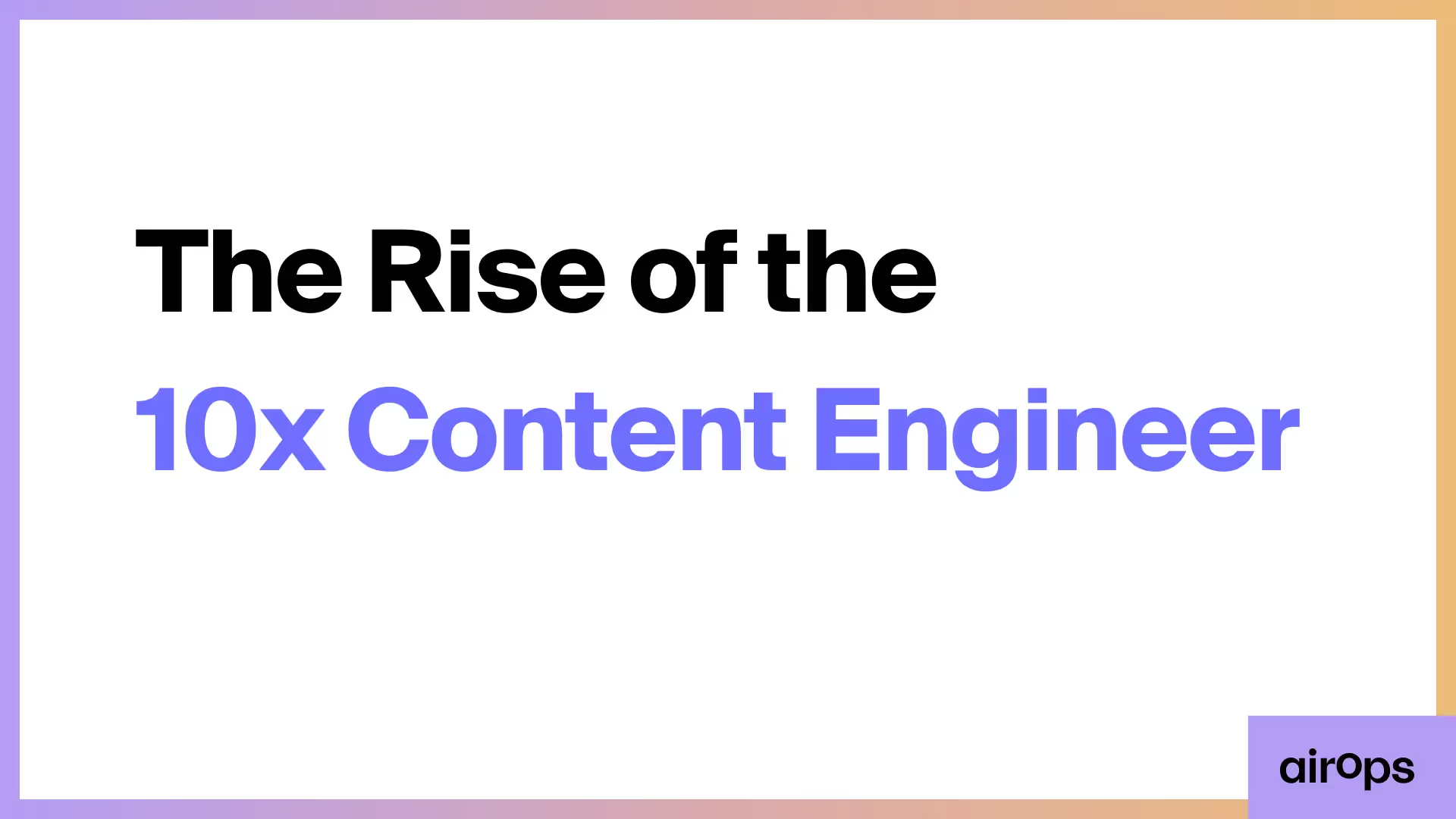
This is the era where content marketers aren’t just writers or strategists or even SEO managers.
They’re engineers of scalable, high-impact content systems.
The best content teams are no longer limited by bandwidth but by their ability to build smart workflows that maximize efficiency and creativity.
It’s time for your team to embrace it.
But first, let's level set on what a 10x engineer can do.
First coined in 1975 by Frederick Brooks, the 10x programmer/engineer could do 10:1 what a junior engineer could accomplish.
Then whole teams were built around supporting that engineer.
What does that mean in today's terms?
This Reddit reply is a good definition:

Similarly, the 10x Content Engineer is someone who:
- Thinks in systems
- Blends AI and automation to grow content production with an eye on quality
- Creates repeatable workflows for programmatic SEO, content refresh cycles, and personalized user experiences
- Moves beyond traditional content formats, leverages data-driven insights, AI-generated assets, and dynamic content hubs
How does the content engineer sit alongside current roles? We'll explore this in more posts, but the content engineer could be a potent combination of:
- Product manager
- Content strategist
- Writer / creator
- AI Prompt engineer
- SEO manager
From content production to content engineering
Traditional content marketing often forces a trade-off: do you prioritize quantity or quality?
But, as we’ve discussed before, this is a false choice. AI and automation reshape this equation. Instead of choosing, a 10x Content Engineer builds systems that shortens content production times while improving quality.
Content success is no longer just about ranking—it’s about building interactive, AI-ready content ecosystems.
Growth consultant Kevin Indig in a recent AirOps webinar describes this shift best:
“Search is shifting more from a click-out model that would send referral traffic to websites to an engagement model.”
Consider the retail brand Anne Klein—they increased their publication speed by 95%, reducing their time to publish by automating research, content creation, and internal linking while keeping human review in the loop.
This is the core of 10x content engineering: designing workflows that make ambitious content strategies achievable.
The 10x Content Engineering Framework
The transformation to a 10x Content Engineer happens in three stages:
- Automate the repetitive – Use AI for research, metadata, and first drafts so teams can focus on creativity and refinement.
- Build scalable content systems – Create workflows for dynamic content hubs, internal linking, and programmatic SEO.
- Continuously optimize & refine – Implement automation feedback loops, ensuring AI-driven content improves over time.
Growth advisor Chang Chen reinforces this point on workflow-based scaling:
“We haven’t seen AI completely change some workflows yet. It’s mostly that when we find a working workflow, we’re able to delegate it to AI and scale 10X faster.”
No, a 10x Content Engineer doesn’t just automate for efficiency.
It's more than that.
They design systems that multiply their impact, ensuring each content workflow grows and evolves over time.
Beyond Traditional SEO: Multi-channel content engineering
Big sites have to shift their traditional SEO practices, even though it brought them success in the past.
We mentioned this in our post about Hubspot's traffic decline:
As Hubspot grew even larger, expanding from a marketing automation platform to a CMS to a CRM, their list of topics grew too, stretching their topical authority and what they were “known” for.
HubSpot’s strategy of casting a wide net may have worked in a less saturated search environment, but today’s algorithms are different.
Platforms like Reddit, LinkedIn, and high-trust forums have become critical channels for influencing buyer decisions before they reach Google.
Content engineers must rethink SEO as more than just optimizing for Google.
In a recent webinar, George Chasiotis from Minuttia highlighted this critical shift:
“SEO means optimizing for Google, yes, but it also means optimizing for conversational search engines, video search, LLMs, forums, search features, and social media. The job of SEO professionals has become way more complicated than it used to be.”
Think about multiple search ecosystems
A 10x Content Engineer designs structured, AI-powered content systems that maximize visibility across multiple search ecosystems, including:
- AI search engines (Google AI Overviews, Perplexity, ChatGPT)
- Programmatic SEO (Informed topic clusters and automated internal linking)
- Social discovery platforms (Reddit, LinkedIn, YouTube)
What does this look like practically speaking?
For example, in AirOps you can set up a brand kit and knowledge base that maintains your tone of voice and style guidelines.
You can then upload relevant information – like webinar recordings or sales calls–and find relevant clips. You can also add custom workflow steps for more context, such as additional company research or pulling key stats (like number of employees or revenue) from an LLM, such as Perplexity.
You’ll start to see the possibilities are endless.
These could include:
- Web scrape of the top SERPs or Reddit communities
- Perplexity research to supplement information on a specific topic
- A bank of your messaging and positioning to generate LinkedIn drafts
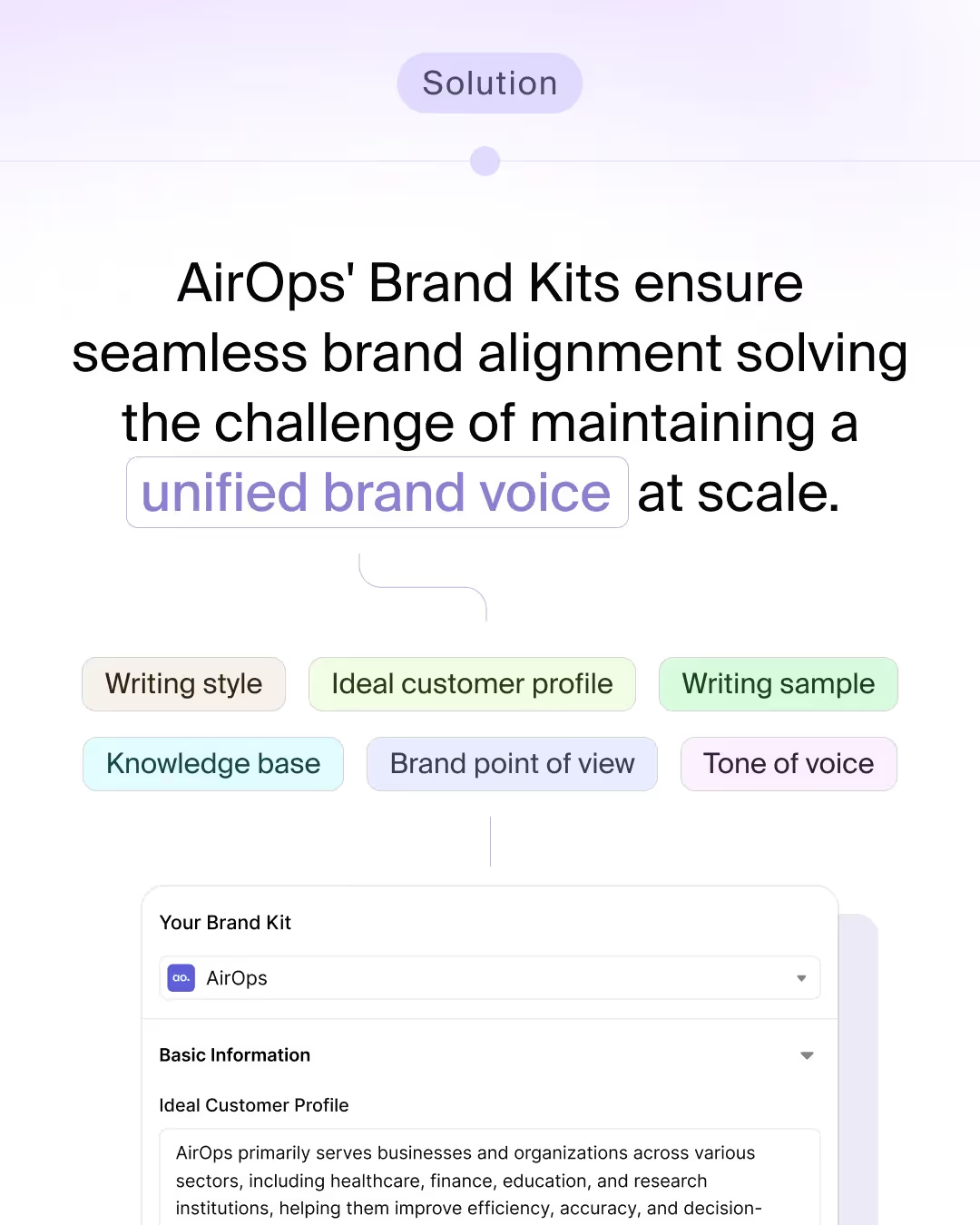
Impossible-to-replicate as a competitive edge
AI-generated content has made traditional SEO more competitive than ever. Uniqueness is now the ultimate ranking factor. A 10x Content Engineer wins by creating impossible-to-replicate assets that includes exclusive data, interactive tools, and deep industry expertise.
For a 10x Content Engineer, differentiation is baked into content workflows.
- Proprietary data (surveys, product usage insights, customer research)
- Interactive content (live dashboards, AI-powered tools)
- Multi-platform strategy (leveraging YouTube, LinkedIn, and Reddit for visibility)
Your brand cannot be an expert in each and every topic. Your must choose what it’s going to own, and the content engineer makes decisions on your highest-fit topics. This isn’t a limitation. It’s a strategy, and likely the best forcing function to come your way.
A 10x Content Engineer builds defensible content systems by blending those insights and your brand knowledge into every AI-driven content process.
AI overviews & the new SEO strategy
AI-generated answers are reshaping how users interact with search results. Google’s AI Overviews (AIOs) are shifting search from a traffic referral model to an engagement model.
A 10x Content Engineer prepares for this by optimizing for AI visibility:
- Structuring content to align with AI-generated overviews
- Leveraging LinkedIn articles and YouTube content, which Google prioritizes in AIO citations
- Building programmatic SEO strategies that ensure a constant flow of fresh, AI-optimized content
The AIR Framework for AI-powered content success
Succeeding with AI tools like AirOps requires a clear strategy to maximize impact. That’s where the AIR Framework comes in:
- Automate
- Integrate
- Refine
This practical approach helps marketing teams streamline workflows, improve content, and drive real results.
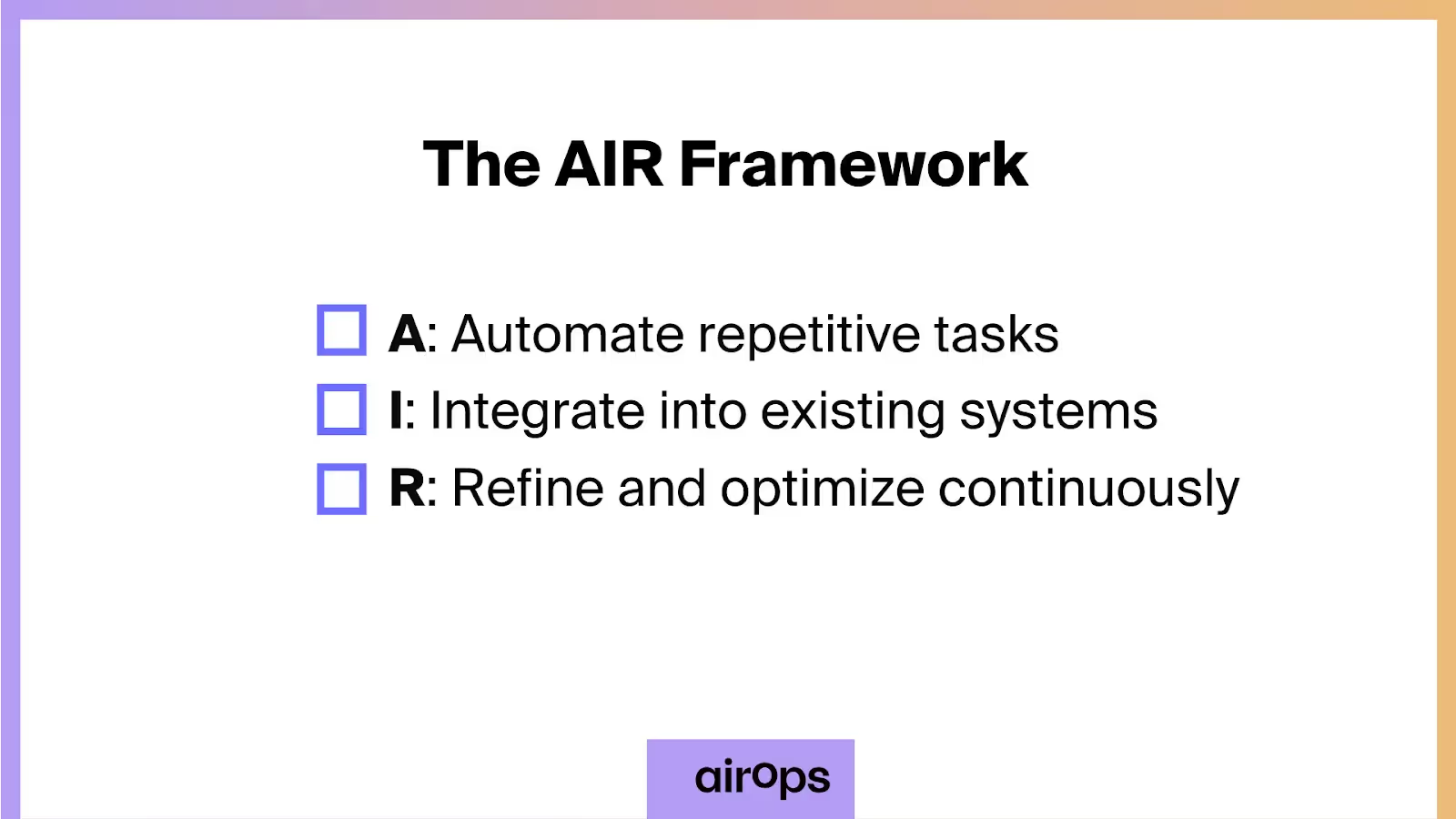
A: Automate Repetitive Tasks
The first step is to identify time-consuming, repetitive tasks that AI can handle. Whether it’s generating blog drafts, service pages, or conducting keyword research, automation frees up your team to focus on creative and strategic initiatives.
How to Implement:
- Identify bottlenecks in your content workflow (e.g., initial drafts, metadata creation).
- Use AirOps to automate these tasks, reducing manual effort and increasing output speed.
- Develop custom workflows for recurring content needs, such as blog updates or SEO audits.
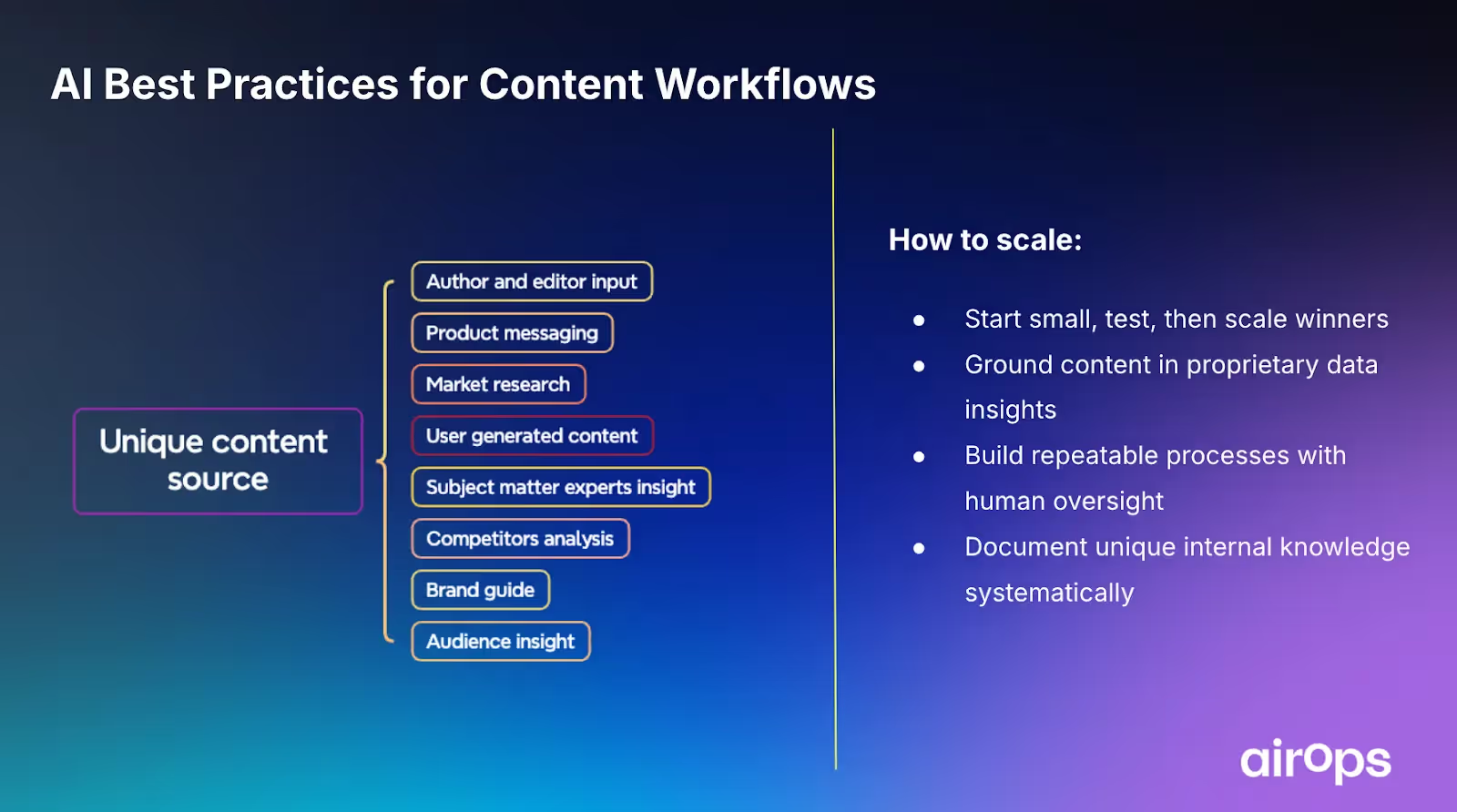
That above slide is from consultant Chang Chen's talk on how to grow your ICP traffic. Check it out here.
One of the most powerful applications of generative AI is its ability to automate repetitive tasks in content creation while keeping humans in the loop for high-quality results.
This workflow example highlights how AI can simplify research, accelerate writing, and streamline editorial processes.
By handling repetitive tasks like research and first drafts, marketers can focus on refining and improving the output. This balance of automation and human oversight ensures high-quality, brand-consistent content at scale, giving small businesses the same capabilities as Fortune 500 companies.
I: Integrate into Existing Systems
To fully leverage AI’s potential, integrate it with your current tech stack. AI should complement tools like CMS platforms, SEO software, and analytics dashboards to create an efficient system.
How to Implement:
- Connect AirOps with platforms like Semrush, WordPress, or Webflow for a unified workflow.
- Automate data-sharing between tools to reduce manual errors and speed up reporting.
- Align AI workflows with your brand voice and ensure content meets established quality benchmarks.
R: Refine and Optimize Continuously
AI is only as effective as the processes and oversight that guide it.
The final step is refining and optimizing outputs through continuous feedback, testing, and improvement. This ensures your content stays relevant, high-quality, and aligned with business goals.
How to Implement:
- Set clear quality benchmarks and conduct regular audits of AI-generated content.
- Use A/B testing to optimize headlines, metatitles, CTAs, and other critical elements.
- Gather team feedback and adjust workflows based on performance data.
Why the AIR Framework works
The AIR Framework creates a balance between automation, system integration, and human oversight, enabling teams to scale content production without sacrificing quality.
By following this framework, you can transform basic AI capabilities into a strong competitive edge.
The Future: From content teams to system builders
Content teams must evolve from production units to system builders.
Instead of optimizing content one piece at a time, 10x Content Engineers build systems that automate and improve content production and maintenance.
This shift is essential for staying competitive. 10x Content Engineers don’t tweak individual pieces—they optimize the system itself, ensuring that each new piece of content is better than the last.
The 10x Mindset: Iterate, automate, engineer
The most successful content teams of the next decade won’t just produce content—they’ll engineer intelligent, scalable content systems. The role of a content marketer is evolving, and those who adopt the mindset of a 10x Content Engineer will lead the way.
Are you ready to re-make your content ops? Talk with our AI growth experts today.
Win AI Search.
Increase brand visibility across AI search and Google with the only platform taking you from insights to action.
Get the latest on AI content & marketing
Get the latest in growth and AI workflows delivered to your inbox each week



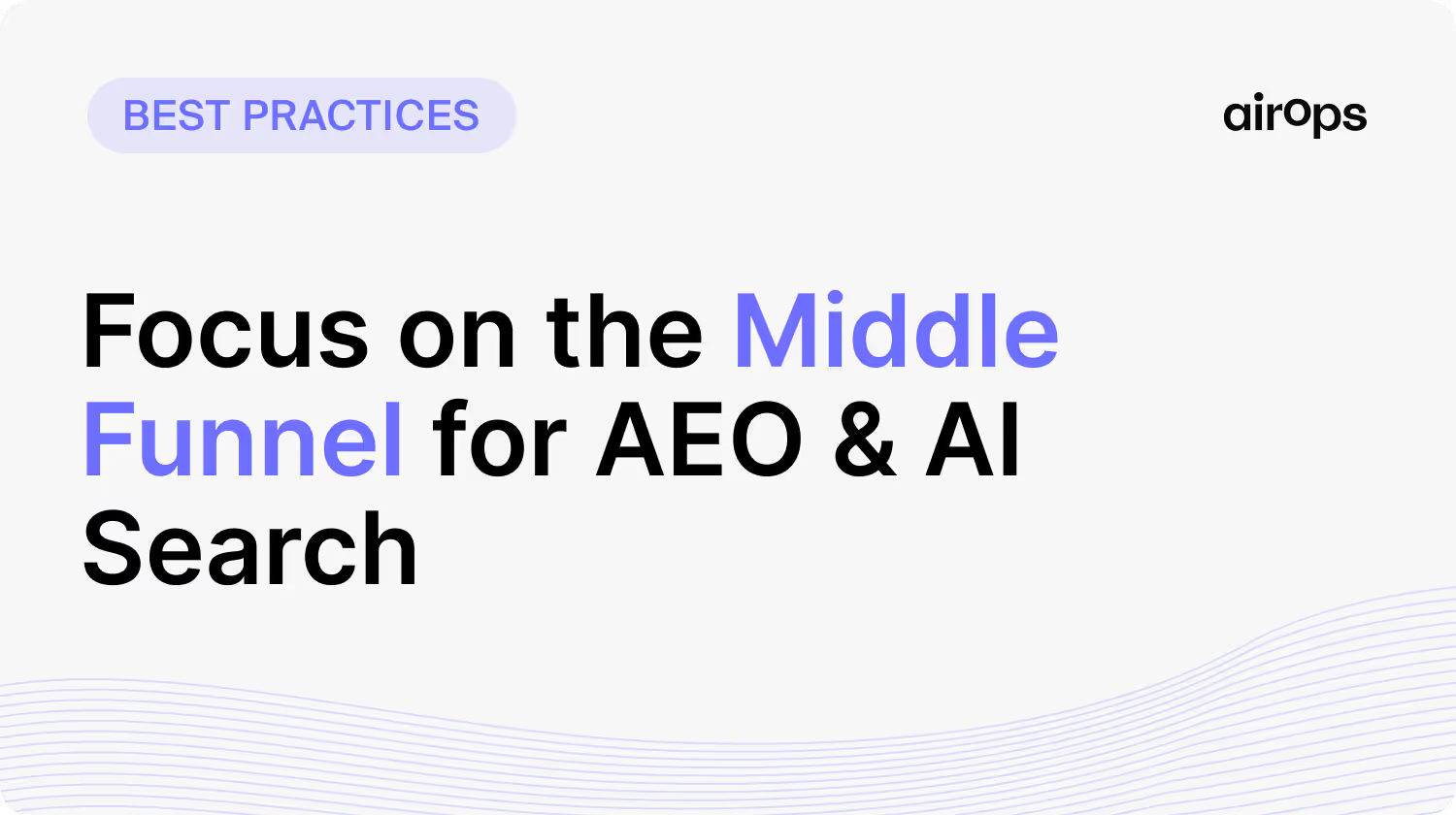
.avif)
.avif)
